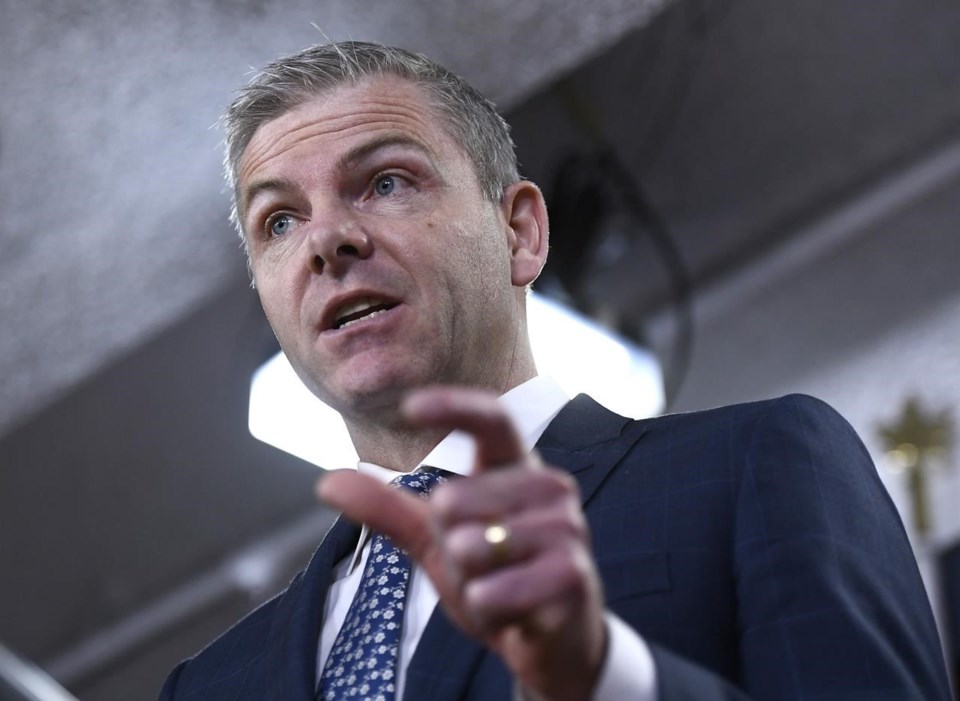CALGARY — Canada's largest oil and gas industry group says capital spending in the oilpatch will hit $32.8 billion this year, a 22 per cent increase from the year before but still a far cry from the boom-time levels of investment a decade ago.
According to the Canadian Association of Petroleum Producers (CAPP), capital spending in the industry will grow by $6.0 billion this year compared to an estimated total investment of $26.9 billion in 2021.
It's positive news for an industry that has now essentially recovered to its pre-pandemic levels, after a disastrous 2020 that saw oil prices collapse due to the impact of COVID-19 on global demand.
But CAPP president Tim McMillan pointed out that in spite of the fact that oil prices are at seven-year highs and companies are recording record cash flows, capital investment remains well below what it was during the industry's boom years. In 2014, for example, capital investment in the Canadian oilpatch hit an all-time record high of $81 billion, capturing 10 per cent of total global upstream natural gas and oil investment.
"Today we’re at $32 billion, and we’re only capturing about six per cent of global investment," McMillan said. "We’ve lost ground to other oil and gas producers, which I think is problematic for a lot of reasons . . . and it leaves billions of dollars of investment that is going somewhere else, and not to Canada."
Investment in conventional oil and natural gas is forecast at $21.2 billion in 2022, according to CAPP, while growth in oilsands investment is expected to increase 33 per cent to $11.6 billion this year.
Alberta is expected to lead all provinces in overall oil and gas capital spending, with upstream investment expected to increase 24 per cent to $24.5 billion in 2022. Over 80 per cent of the industry's new capital spending this year will be focused in Alberta, representing an additional $4.8 billion of investment into the province compared with 2021, according to CAPP.
While the 2022 forecast numbers are good news for the Canadian economy, McMillan said, it's a problem that companies aren't willing to invest in this country's industry at the level they once did.
He said investors have been put off by Canada's record of cancelled pipeline projects, regulatory hurdles and negative government policy signals, and many now see Canada as a "difficult place to invest."
However, Rory Johnston, managing director and market economist at Toronto-based Price Street Inc., said laying the decline in the industry's capital spending at the feet of the federal government is overly simplistic.
He added while current "rip-roaring, amazing" cash flows and a period of sustained high oil prices will certainly give some producers the appetite to invest this year, Johnston said, it will likely be on a project-by-project basis and certainly on a smaller scale than the major oilsands expansions of a decade ago.
"You have global macro trends across the entire industry that have begun to favour smaller, fast-cycle investment projects — and most oilsands projects are literally the polar opposite of that,” he said.
One reason capital spending isn't likely to return to boom time levels is because companies have become much more cost-efficient after surviving a string of lean years. And that's not a bad thing, Johnston said.
"The decade of capex boom out west was tremendously beneficial for Canada and Albertans, but it also caused tremendous cost inflation," he said.
“While what we're seeing right now is not as construction-heavy and not as employment-heavy —and those are two very, very large downsides — the upside is that you’re much more competitive in a much more competitive oil market," Johnston said.
In a report released this week, the International Energy Agency (IEA) hiked its oil demand growth forecast for the coming year by 200,000 barrels a day, to 3.3 million barrels a day.
According to the IEA, global oil demand will exceed pre-pandemic levels this year due to growing COVID-19 immunization rates and the fact that the new Omicron variant hasn't proved severe enough to force a return to strict lockdown measures.
This report by The Canadian Press was first published Jan. 20, 2022.
Amanda Stephenson, The Canadian Press



